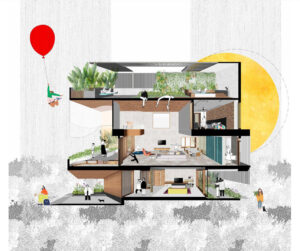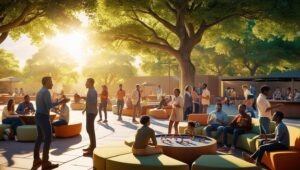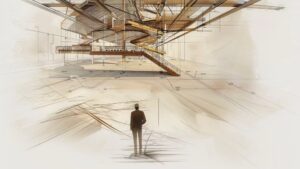
Behind The Design
Why Do Some Spaces Feel Extraordinary Social Than Others?
Some spaces feel amazingly inviting where others feel cold and isolating. Why? The answer lies in spatial design.
Why Do Some Spaces Feel Extraordinary Social Than Others?
Some spaces feel amazingly inviting where others feel cold and isolating. Why? The answer lies in spatial design.
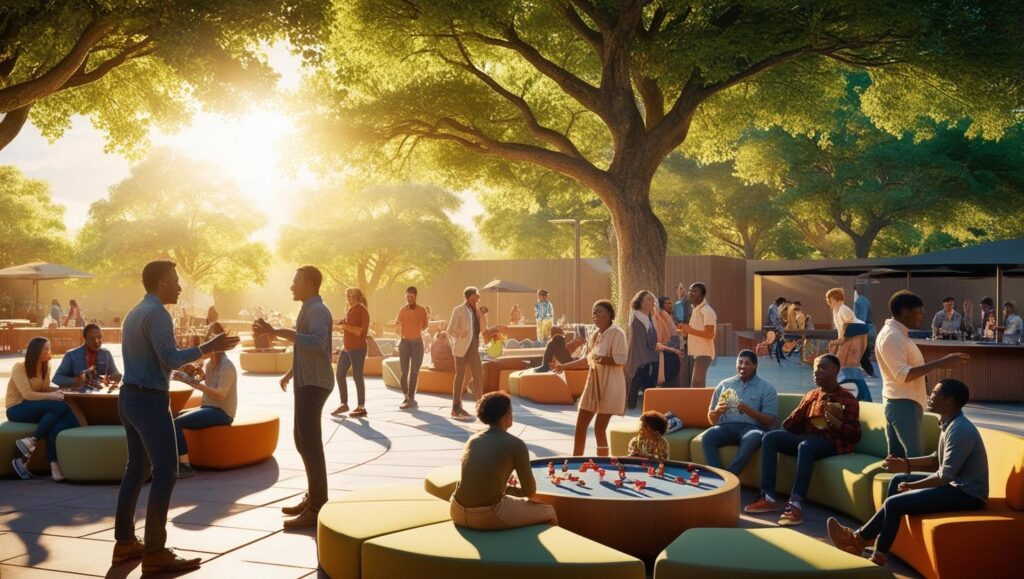
Table of Contents
👀 Ever walked into a space and instantly felt the buzz of human energy?
Maybe it was a lively plaza, a cozy café, or even a library reading room with quiet camaraderie.
On the flip side, maybe you’ve entered a lobby that felt sterile… a waiting area that seemed to whisper “don’t talk”.
So what’s going on?
It’s not just people that make a space social.
It’s how the space is shaped to support connection.
🧠 The Psychology of Social Space
Humans are wired for connection — but we don’t connect just anywhere.
We connect where the environment makes it feel natural, safe, and easy.
Research and experience show that spaces feel more social when they:
- Offer visibility without exposure
- Create intersections, not dead ends
- Encourage lingering without making it awkward
- Mix movement and stillness zones seamlessly
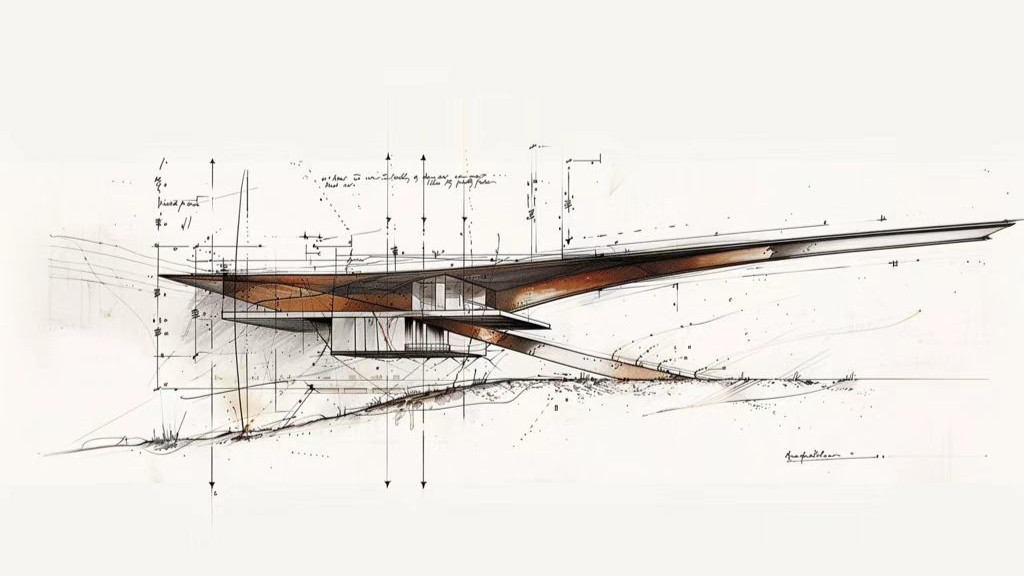
🧩 The Spatial Features That Make It Happen
🔄 1. Integration Over Isolation
According to space syntax theory, spaces that are well-connected to other spaces (i.e., highly integrated) tend to support higher rates of co-presence — meaning more natural human interaction.
👁 2. Visual Fields Matter
Open sightlines allow people to see others without having to engage immediately. That builds comfort.
Think: a coffee shop where you can scan the room before choosing where to sit.
🪑 3. The Power of “Loose Fit” Spaces
These are spaces that support multiple functions.
A step becomes a seat. A planter edge becomes a chat zone. These invite spontaneous social use.
🔄 4. Circulation That Crosses Paths
When paths intersect, people see each other more often — and interaction becomes a natural by-product of movement.
🏛 Real-Life Social Spaces
- University Courtyards → Multiple entries, visible seating, natural movement paths
- Public Markets → Circulation weaves through stalls, increasing casual interaction
- Museum Lobbies → Open, central spaces where people pause, gather, and navigate
- Residential Shared Gardens → Semi-private, but open enough to wave, smile, or chat
These are architectural invitations — not just amenities.
❌ What Makes a Space Un-Social?
- Long, narrow corridors with no sightlines
- Overly rigid seating arrangements
- Single-use zones with no flexibility
- Spaces that are too loud, too echoey, or too exposed
These create social friction — and friction pushes people apart.
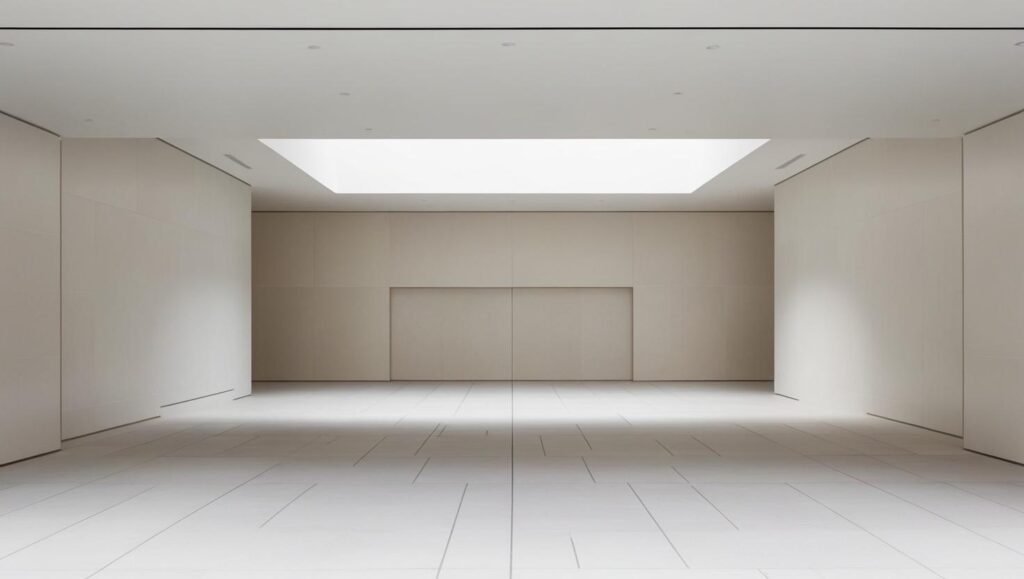
🧠 What Bill Hillier Taught Us
Bill Hillier’s space syntax helps us measure:
- How integrated or segregated a space is
- How often paths cross or dead-end
- Where people are most likely to encounter each other
“It’s not the space itself — it’s the configuration of space that produces social outcomes.”
💡 Final Thought
If you want to design more social spaces, ask yourself:
- Can people see each other?
- Can they pause naturally?
- Can they enter and exit from more than one point?
- Is the space flexible enough to let people use it their way?
Because social space isn’t just about furniture.
It’s about freedom, flow, and feel.
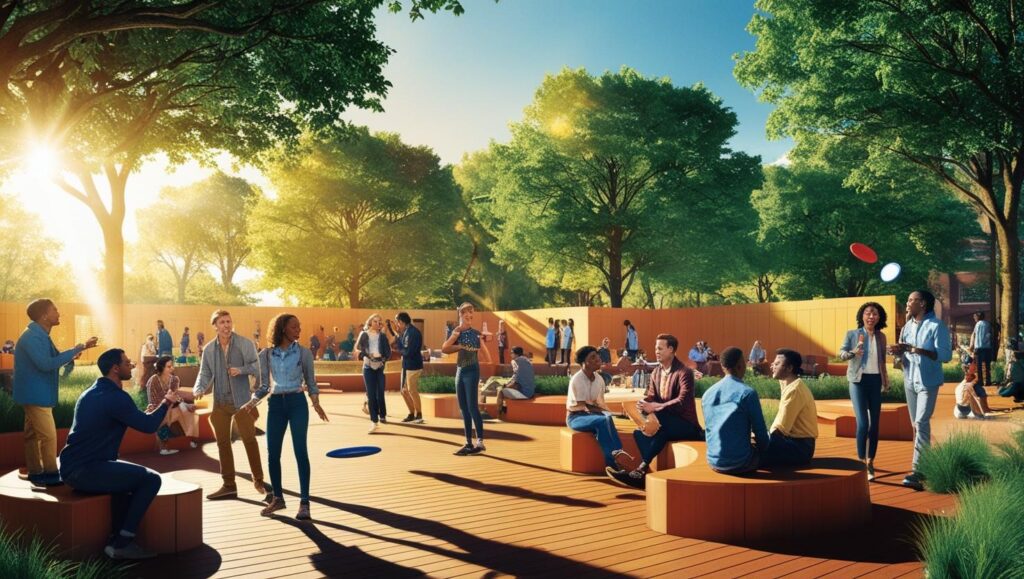
“We don’t create social life with intention alone — we create it with configuration.”
#Architecture #Design #SpatialDesign #UrbanPlanning #SpaceSyntax #BuiltEnvironment #DesignThinking #SocialArchitecture #PublicSpace #DesignPsychology #PatternLanguage
